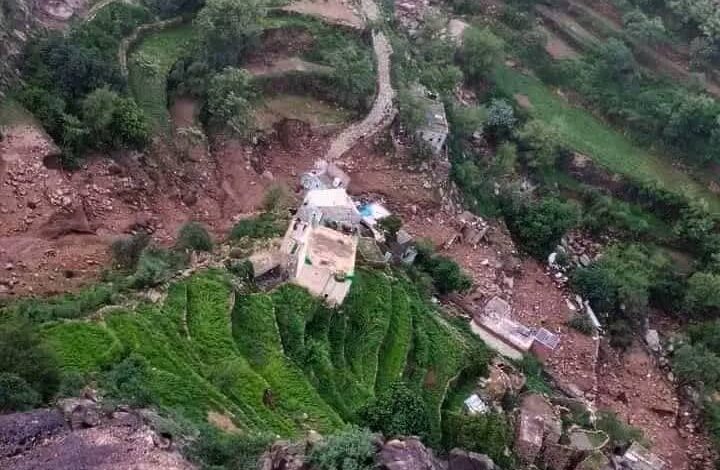UN Warns of a Coming Flash Floods in Yemen

Yemen Monitor/Newsroom
The United Nations has warned that the risk of flash floods remains high due to flooding in valleys and waterlogged soil, especially in areas with inadequate sanitation systems, despite the end of the rainy season in Yemen.
The Food and Agriculture Organization of the United Nations (FAO) said in its latest early warning bulletin, released today, Tuesday, that “as the summer rainy season in Yemen comes to an end, the frequency and intensity of daily rainfall is decreasing. However, areas are still severely affected by recent heavy rains. The central highlands, with their mountainous terrain that directs water into valleys and lowlands, continue to suffer from the effects of the remaining floods.”
It added, “Despite the gradual clearing of clouds, the risk of flash floods remains high due to swollen rivers and waterlogged soil, especially in areas with inadequate drainage systems.”
The FAO indicated that the occurrence of local flooding events can disrupt daily life in affected communities, cause damage to critical infrastructure, and hinder ongoing recovery efforts from previous flood events.
It continued, “As the rainy season ends, its residual impact serves as a reminder of the country’s vulnerability to floods, and this situation underscores the need for constant vigilance and preparedness in flood-prone areas, even as the direct threat of heavy rainfall subsides.”
The FAO confirmed that the severity of the floods exceeded expectations, and these events resulted in: the displacement of more than 9,000 families, severe damage to personal property and infrastructure, and significant disruption to livelihoods and daily activities.
The FAO reported that Yemen is facing diverse rainfall patterns in the coming days: In the near future, Yemen is expected to experience varying levels of rainfall, with some areas facing heavy rain.
It confirmed that the risk of floods persists in key areas: Despite the expected decrease in rainfall soon, the risk of floods remains high. This continued risk is mainly due to the saturation of the soil with water due to recent heavy rains.





